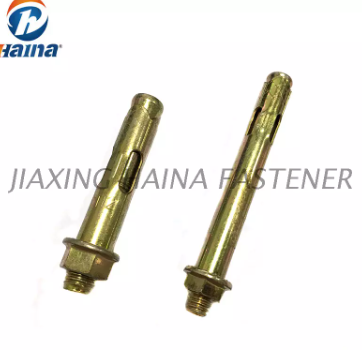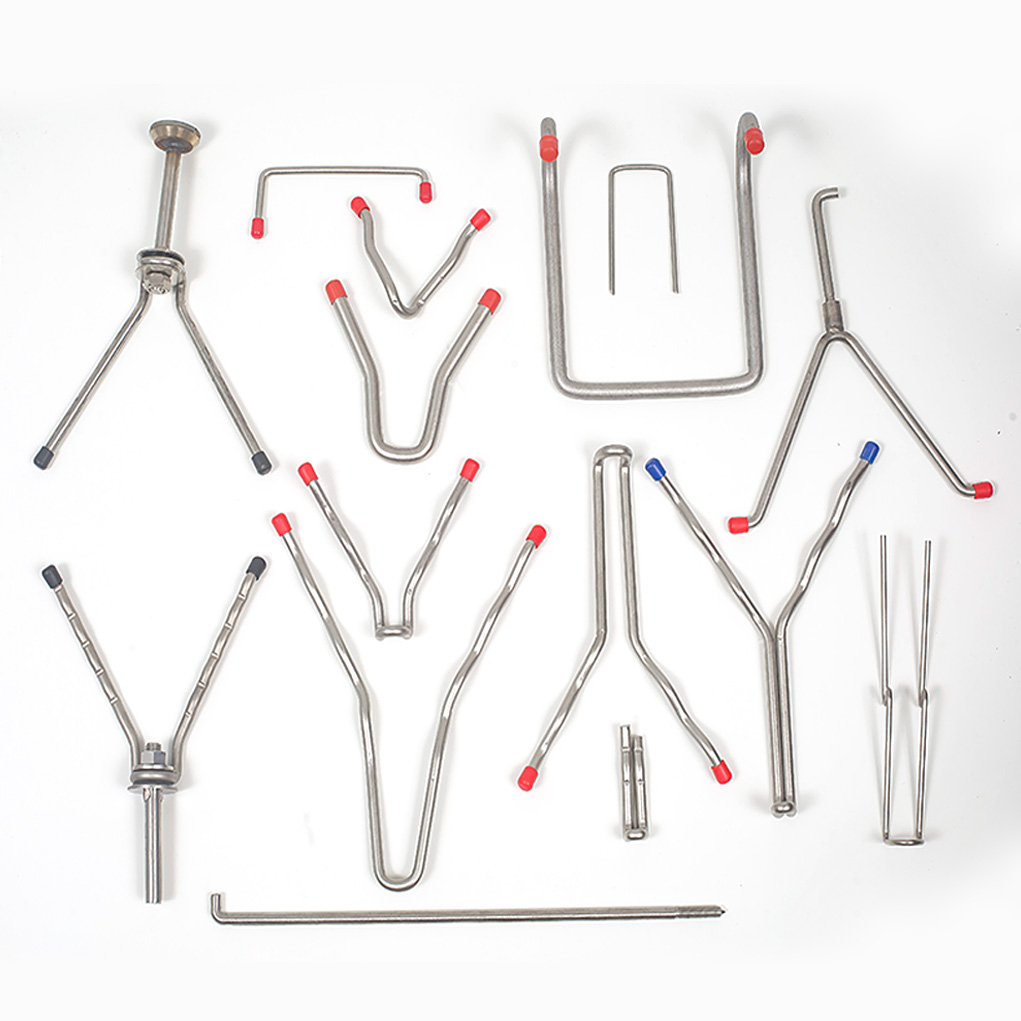- All
- Product Name
- Product Keyword
- Product Model
- Product Summary
- Product Description
- Multi Field Search
Author: Site Editor Publish Time: 2025-06-15 Origin: Site

Sleeve anchor bolts let you attach things to concrete or brick. These fasteners expand to hold tightly in solid surfaces. They are simple to install, even for new users. Sleeve anchors are helpful in building, factories, and home tasks. They are strong and useful for fixing shelves or supports.
Sleeve anchor bolts are tools used to attach things to hard surfaces like concrete or brick. They work by expanding inside the hole to hold tightly. These bolts are important for many jobs, such as building, factory work, and home projects. You can use them to put up shelves, secure machines, or hold parts of a structure in place. They are strong and help keep things stable for a long time.
Purpose/Definition | Description |
|---|---|
Versatile Fasteners | Attach objects firmly to concrete and brick surfaces. |
Structural Support | Hold items like door frames and railings securely to bases. |
Industrial Use | Keep heavy machines steady on concrete floors. |
Residential Projects | Useful for putting up shelves and handrails at home. |
Infrastructure | Fix bridge supports and signs to concrete and brick. |
Renewable Energy | Secure solar panels and wind turbines to solid surfaces. |
Mechanical Expansion | Expands inside the hole to grip the base material tightly. |
Sleeve anchor bolts have four main parts: bolt, sleeve, nut, and washer. Each part helps make the bolt hold securely:
Bolt: The main piece that keeps everything anchored.
Sleeve: Pushes against the hole walls to create a strong grip.
Nut: Tightens the bolt and holds it firmly in place.
Washer: Spreads out the pressure to protect the surface.
These parts work together to make the bolt strong enough for medium-duty jobs. For example, galvanized nuts are made slightly bigger to fit the thicker coating from galvanizing. This makes them last longer in tough conditions.
Sleeve anchor bolts are very important in building and engineering. They connect parts of structures to their bases, making them strong and stable. They help spread weight evenly to keep buildings safe. These bolts are also good for areas with earthquakes because they resist shaking. You can use them in masonry, bridges, and renewable energy projects. Knowing how much weight they can hold is key to using them safely and effectively.
Tip: Pick the right size and type of sleeve anchor bolts for your project to make sure they work well and keep things stable.
Sleeve anchors use a smart expansion method to stay secure. Tightening the nut pulls the bolt upward, making the sleeve expand. This pushes the sleeve against the hole walls tightly. The pressure and friction keep the anchor firmly in place, even with heavy loads.
Here’s how it works: First, drill a hole in the surface. Next, put the sleeve anchor into the hole. Tightening the nut makes the bolt push the sleeve outward, causing it to expand. This process is key for using sleeve anchors in jobs like securing railings or heavy equipment.
Note: Research shows the friction between the sleeve and concrete is very important. Using the right torque during installation helps the anchor hold its full weight.
Installing sleeve anchors correctly is important for a strong hold. Follow these steps:
Drill a Hole: Match the drill bit size to the anchor. Make sure the hole is straight and deep enough.
Clean the Hole: Brush or blow out dust and debris. A clean hole helps the anchor grip better.
Insert the Anchor: Push the anchor through the object and into the hole. Tap it gently with a hammer until it’s even with the surface.
Tighten the Nut: Use a torque wrench to tighten the nut to the correct level. This makes the sleeve expand and hold securely.
Tip: Check the anchor’s instructions for the right torque and weight limits. This ensures the anchor works as expected.
To make sure sleeve anchors hold well, consider these points:
Anchor Size and Type: Pick the right anchor based on the load’s weight. Heavy-duty jobs need stronger anchors.
Base Material: Use solid concrete or brick without big cracks. Weak surfaces can reduce the anchor’s strength.
Hole Preparation: Drill the hole to the exact size and depth needed. Clean it well to remove dust that can weaken the grip.
Torque Application: Tighten the nut to the recommended level. Too loose or too tight can affect the sleeve’s expansion.
Spacing and Edge Distance: Keep anchors spaced apart and away from edges. This prevents cracks and spreads the weight evenly.
By following these tips, sleeve anchors will work well and stay reliable in different projects.

There are different types of sleeve anchor bolts. Each type is made for specific uses:
Hex Nut Sleeve Anchors: These are the most common and flexible. They are great for holding heavy items like machines or supports.
Flat Head Sleeve Anchors: These sit flat on surfaces, making them good for neat finishes. Use them for handrails or decorative items.
Round Head Sleeve Anchors: These have a smooth, rounded top. They are used for furniture or light equipment.
Each type has its own advantages. Knowing their features helps you pick the right one.
The material of a sleeve anchor bolt affects its strength and use. Common materials include:
Stainless Steel: It doesn’t rust, so it’s great for wet or outdoor areas.
Carbon Steel: This is very strong and works well for heavy jobs in dry places.
Zinc-Plated Steel: It resists some rust and is cheaper for indoor projects.
Choosing the right material makes sure the anchor works well for your project.
Pick the best sleeve anchor bolt by thinking about the weight, location, and surface. For heavy loads, use hex nut anchors made of carbon steel. If it’s a wet area, stainless steel is better. For light indoor tasks, zinc-plated anchors are a good choice.
Also, check the surface. Concrete and brick need different anchors for a strong hold. Matching the type and material to your project ensures safety and long-lasting results.
Sleeve anchors have many benefits that make them useful. They work in different places, like homes or factories. These anchors hold objects firmly, keeping them secure for a long time.
A great feature of sleeve anchors is their ability to resist rust. Stainless steel and galvanized coatings stop rust, making them good for wet or outdoor areas. You can use them to anchor fences, gates, or outdoor furniture. They stay strong and reliable over time.
Sleeve anchors are also great for heavy-duty jobs. They can hold heavy loads like steel beams, brackets, or handrails. Their strong grip keeps things safe and steady, even in tough conditions.
Did You Know? Sleeve anchors filled with grout resist shear forces well. This makes them strong for construction projects needing durability.
Sleeve anchors are used in many industries. In construction, they secure parts like steel beams or railings to concrete. They hold tightly, even in areas with earthquakes.
In factories, sleeve anchors fix machines to concrete floors. They keep heavy equipment steady while it runs. They also hold pipes, lights, and HVAC systems securely, even with vibrations.
At home, sleeve anchors are great for shelves, cabinets, and handrails. They are easy to use and look neat. You can use them to mount TVs or attach decorations. They provide a strong and stable hold.
Examples of Sleeve Anchor Applications:
Securing beams and brackets.
Fixing machines in factories.
Hanging pipes and lights.
Anchoring fences and gates outdoors.
Sleeve anchors are better than some other fasteners. Unlike glue-based anchors, they don’t need drying time or perfect weather. This makes them quicker and easier to use.
Expansion anchors are similar but less flexible. Sleeve anchors work for both light and heavy tasks. Their rust-resistant materials make them better for wet or outdoor areas.
Sleeve anchors are affordable and strong. They cost more than basic fasteners but last longer. For projects needing a secure hold, sleeve anchors are a smart choice.
Pro Tip: Use sleeve anchors when you need a fast, strong, and lasting way to attach objects to solid surfaces.
To keep sleeve anchors strong, follow these simple tips. First, pick the right type of anchor for your project. Using materials like stainless steel or zinc-plated steel helps prevent rust. Always install anchors in solid surfaces like concrete or brick for better durability.
Protect anchors from weather damage. For outdoor use, add a coating to stop moisture and rust. If anchors face heavy loads or vibrations, check them often to make sure they stay tight. Taking care of your anchors will help them last longer and stay strong.
Checking sleeve anchors regularly is important to keep them working well. Look for rust, wear, or loose parts. Replace damaged anchors quickly to avoid problems. Cleaning the anchors and nearby areas removes dirt that can weaken their grip.
Tighten nuts every so often to keep the anchors secure. Use a torque wrench to apply the right force. Too much or too little force can make the anchor less effective. Regular care helps avoid big repairs and keeps anchors reliable.
Avoiding mistakes during installation and care is very important. Here are some common errors and what they cause:
Mistake | Problem |
|---|---|
Wrong anchor choice | Using the wrong type makes the anchor unstable. |
Skipping steps during installation | Rushing weakens the anchor's hold. |
Ignoring instructions | Not following guidelines lowers the anchor's strength. |
Using the wrong tools | Incorrect tools make installation harder and less effective. |
Over-tightening or under-tightening | Wrong torque damages the anchor or surface. |
Drilling holes of the wrong size | Holes too big or small reduce the anchor's grip. |
Not cleaning holes before use | Dust stops the anchor from expanding properly. |
By avoiding these mistakes, sleeve anchors will work better and last longer. Always follow instructions and use the correct tools. Careful preparation ensures a strong and safe hold.
Sleeve anchor bolts are important for attaching things to concrete or brick. They are useful in building, factories, and home projects. These fasteners hold objects tightly and are simple to use. Picking the right type and installing them correctly makes them work better. Regular care keeps them strong and safe for a long time.
Tip: Choose the right anchor for your project to get the best results.
Sleeve anchors work on strong surfaces like concrete, brick, and block. These materials are solid enough for the anchor to expand properly. Do not use them on hollow or weak surfaces, as they won’t hold well.
Pick the size based on the object’s weight and base thickness. Bigger anchors can hold heavier items. Always check the manufacturer’s guide to match the anchor size to your project needs.
Sleeve anchors are made for one-time use only. Taking them out can harm the sleeve or surface, making them less effective. Use new anchors for fresh installations to ensure a strong hold.
Yes, stainless steel or galvanized sleeve anchors resist rust and corrosion. This makes them great for outdoor projects like fences, gates, or anything exposed to rain or moisture.
You’ll need a drill with a masonry bit, a hammer, and a torque wrench. The drill makes the hole, the hammer helps place the anchor, and the torque wrench tightens it securely.